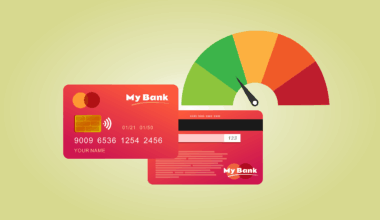Integration of Penetration Pricing with Competitive Strategies
Penetration pricing serves as an effective marketing strategy for businesses seeking to enter competitive markets. By setting lower initial prices, companies can attract customers away from existing competitors. This tactic significantly influences the market landscape, as new entrants can quickly gain market share. Implementing penetration pricing alongside strong competitive strategies enhances its effectiveness. For instance, companies should conduct comprehensive market research to identify key competitors’ pricing models. Understanding their strengths and weaknesses allows businesses to position their penetration pricing effectively. Additionally, integrating promotional strategies, such as discounts or limited-time offers, can further amplify the impact of penetration pricing. Fostering customer loyalty becomes essential, as it encourages repeat purchases and mitigates the risks associated with low initial pricing. This approach also opens channels to build brand recognition. As brands enhance visibility through aggressive advertising and promotional tactics, penetration pricing paves the way for stronger customer relationships over time. Ultimately, companies can create a sustainable competitive advantage by continuously evaluating market dynamics and responding to changes with appropriate adjustments to their pricing strategies. Balancing low prices with value propositions ensures a lasting impact in the competitive arena.
Penetration Pricing and Market Expansion
Utilizing penetration pricing strategically fosters market expansion for new products or services. This pricing model minimizes barriers to entry by offering attractive price points that entice potential customers. By lowering prices, firms can tap into emerging markets and diverse demographics, broadening their customer base. Moreover, penetration pricing stimulates demand, encouraging bulk purchasing and early adoption. As sales increase, companies often benefit from economies of scale, reducing production costs. To maximize this strategy, firms must align penetration pricing with effective marketing campaigns. Utilizing various platforms, including social media and influencer collaborations, amplifies product visibility, further driving customer interest. This synergy helps in creating buzz around the product launch, leading to an immediate influx of customers. It is also crucial for businesses to provide superior customer experiences during this phase. Exceptional service enhances customer satisfaction, leading to positive word-of-mouth referrals, reinforcing market presence. While penetration pricing can lead to short-term financial impacts, with careful planning and execution, it paves the way for long-term success. Companies should continuously evaluate customer feedback to refine their strategies and ensure sustainable growth while maintaining competitive pricing goals in evolving markets.
Integrating Penetration Pricing with Product Strategy
Effective product strategies play a pivotal role in enhancing penetration pricing outcomes. By aligning product quality, features, and positioning with the reduced price point, companies can deliver significant perceived value. This consistency between pricing and product messaging builds customer trust and aids in driving initial sales momentum. Understanding customer needs and preferences is essential when utilizing penetration pricing, as it informs product designs that resonate well in the target market. Before launch, conducting consumer research can uncover important insights regarding desired features and qualities. Furthermore, businesses should consider offering complementary products or bundling options to enhance perceived value. Effective marketing communication is crucial when implementing penetration pricing, ensuring that customers understand the benefits and unique selling propositions tied to the product’s price. Engaging storytelling can differentiate products within crowded markets, while visual content can highlight features effectively. Additionally, adapting to competitive responses is vital. As competitors react with their pricing strategies, businesses must be ready to recalibrate their offerings, ensuring continued attractiveness in a dynamic landscape. This alignment between product strategy and penetration pricing can create a compelling case for customers, stimulating adoption and fostering brand loyalty.
Leveraging Channels with Penetration Pricing
To enhance penetration pricing effectiveness, companies must optimize their distribution channels strategically. Choosing the right channels ensures maximum reach and accessibility of products to target audiences. Various channels, such as online platforms, retail stores, and wholesalers, play specific roles in delivering products efficiently. Businesses can implement penetration pricing through e-commerce sites to target digitally savvy consumers, providing further convenience. Promotional efforts should coincide with the introduction of penetration pricing to emphasize the product’s availability across multiple platforms. Utilizing influencers and partnerships can also help amplify channel exposure, encouraging consumers to engage with the product. Moreover, understanding the dynamics of each channel can inform how penetration pricing is presented. For example, exclusive online discounts may incentivize purchases through e-commerce platforms, while in-store promotions can draw foot traffic. Detailed analytics can provide insights into customer browsing and purchasing behaviors, guiding future channel strategies. Continually assessing channel performance allows companies to fine-tune their approaches, ensuring the penetration pricing strategy remains relevant and effective. Collaborating closely with channel partners can lead to innovative promotional ideas, supporting the overall market expansion goals inherent in the penetration pricing model.
Consumer Engagement Through Penetration Pricing
Engaging consumers effectively during a penetration pricing campaign is essential for long-term success. Successful strategies focus on building meaningful relationships with customers that transcend the initial sale. Utilizing tactics such as personalized marketing ensures that customers feel valued and understood. This cultivates brand loyalty, encouraging repeat purchases over time, which is crucial for recovering any potential losses incurred during the initial pricing phase. Additionally, maintaining ongoing communication through various channels keeps the products relevant and top-of-mind for customers. Social media engagement, newsletters, and promotional content can solidify connections with the audience. Hosting events or webinars may also reinforce brand presence, allowing customers to interact with representatives directly. Addressing customer inquiries promptly enhances satisfaction and encourages favorable reviews, generating more organic buzz around the product. Offering loyalty programs can further support this engagement, rewarding customers for their repeated business. The combination of continuous engagement and valuable incentives creates an atmosphere conducive to long-term brand allegiance. Consequently, penetration pricing becomes more than a tactic; it evolves into a customer-centric approach, aligning business goals with consumer needs and preferences effectively.
Cross-Promoting Products and Penetration Pricing
Cross-promotion serves as a valuable tool that complements penetration pricing strategies effectively. By aligning products with complementary offerings, businesses can leverage their existing customer base to enhance awareness and drive sales. For instance, pairing a new product with an established one can encourage trial among existing customers while enabling the new product to gain traction in the market. This synergy maximizes the benefits of penetration pricing, as consumers are more likely to purchase when they perceive added value in bundled offerings. When implemented strategically, cross-promotions can lead to increased customer engagement and streamlined messaging that reinforces brand loyalty. Collaboration between different departments within a company, such as marketing and product development, is crucial for establishing successful cross-promotions. Additionally, leveraging digital platforms for campaigns enables businesses to reach broader audiences swiftly. Social media posts, promotional emails, and engaging content can further entice customers to explore dual offerings. Ultimately, the cross-promotion of products in tandem with penetration pricing solidifies the position of both offerings within their respective markets. As brands harness the power of collaboration, they can drive sales, increase customer satisfaction, and foster long-term loyalty through innovative marketing tactics.
Measuring Success in Penetration Pricing
Monitoring the effectiveness of penetration pricing strategies is essential for achieving desired business objectives. Companies must establish clear metrics for assessing both short-term and long-term performance. Sales volume, market share growth, and customer acquisition rates are vital indicators that signal the impact of penetration pricing on overall business goals. It is equally important to gather feedback from customers to understand their perceptions and satisfaction levels regarding price and product quality. Utilizing surveys or social media channels can provide valuable insights that guide future decision-making. The frequency of repeat purchases also indicates customer loyalty, which can be critical when measuring the success of a penetration pricing strategy. Analyzing competitors’ reactions allows businesses to fine-tune their pricing approaches, ensuring a competitive edge. Comparisons against sales forecasts and actual performance help gauge profitability and inform potential adjustments in pricing strategies. Businesses should implement data analytics tools to aid in continuous monitoring. This real-time insight can facilitate agile responses to market shifts and customer behavior patterns, ensuring that penetration pricing strategies remain effective and sustained. By measuring success accurately, companies can adapt their approaches, maximizing benefits while enhancing overall market position.
Final Thoughts on Penetration Pricing Strategy
In conclusion, integrating penetration pricing with broader marketing strategies provides a comprehensive approach to market entry and growth. This method not only attracts customers but also builds brand allegiance over time through effective engagement and customer relations. Focusing on product quality, well-optimized distribution channels, and continuous market assessment will enhance penetration pricing effectiveness. To maximize its potential, businesses must remain adaptable, ready to pivot strategies in response to market dynamics or competitive pressures. Consistent evaluation ensures that their pricing approach aligns with customer expectations and market trends. Success in penetration pricing comes from knitting together various marketing efforts, including promotional tactics, customer engagement, and cross-promotion of offerings. By applying diverse strategies in unison with penetration pricing, companies can secure sustained growth while establishing a solid foothold in competitive landscapes. This holistic approach opens avenues for brand expansion and long-term success in a volatile market. By prioritizing customer satisfaction and delivering real value, businesses create opportunities for lasting customer relationships. Ultimately, penetration pricing, when skillfully integrated with other marketing strategies, can become a powerful lever for success in achieving business objectives.


